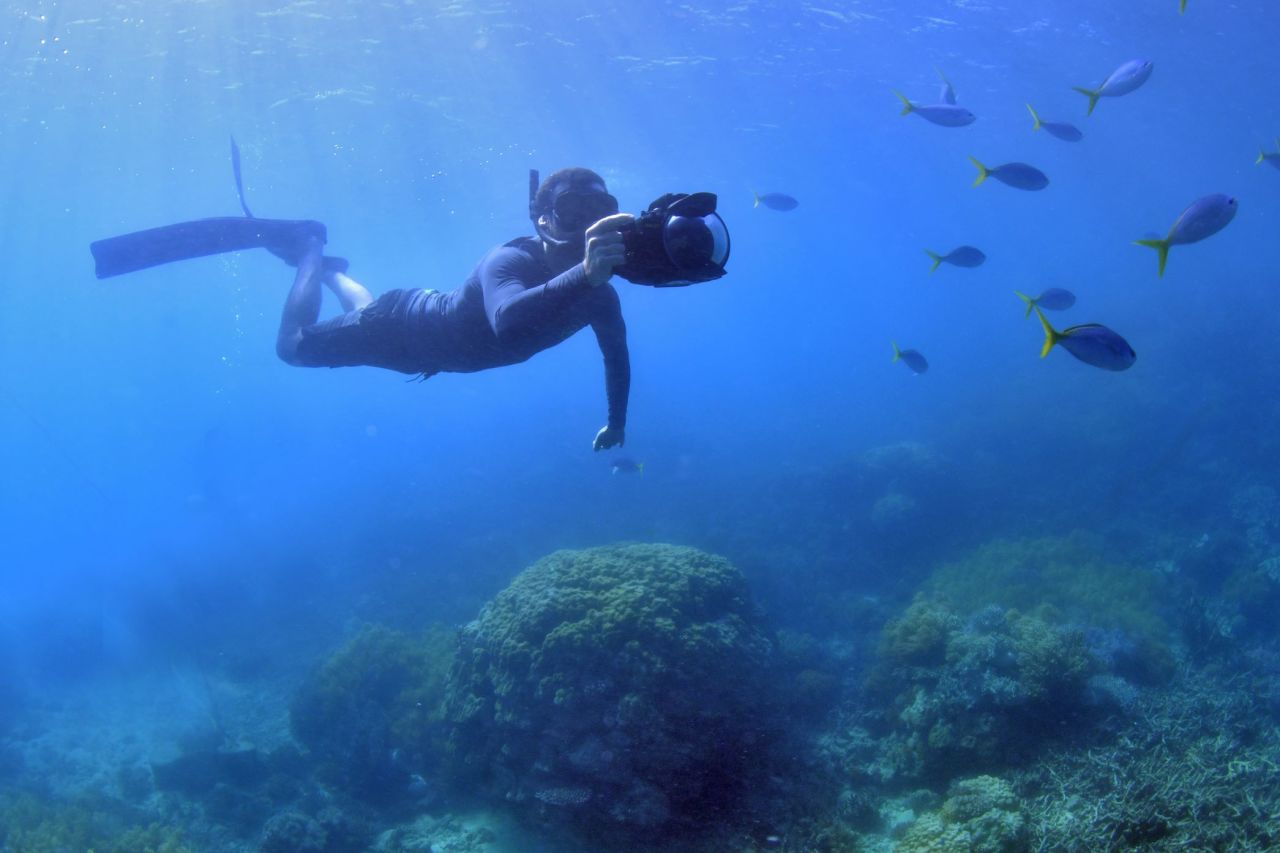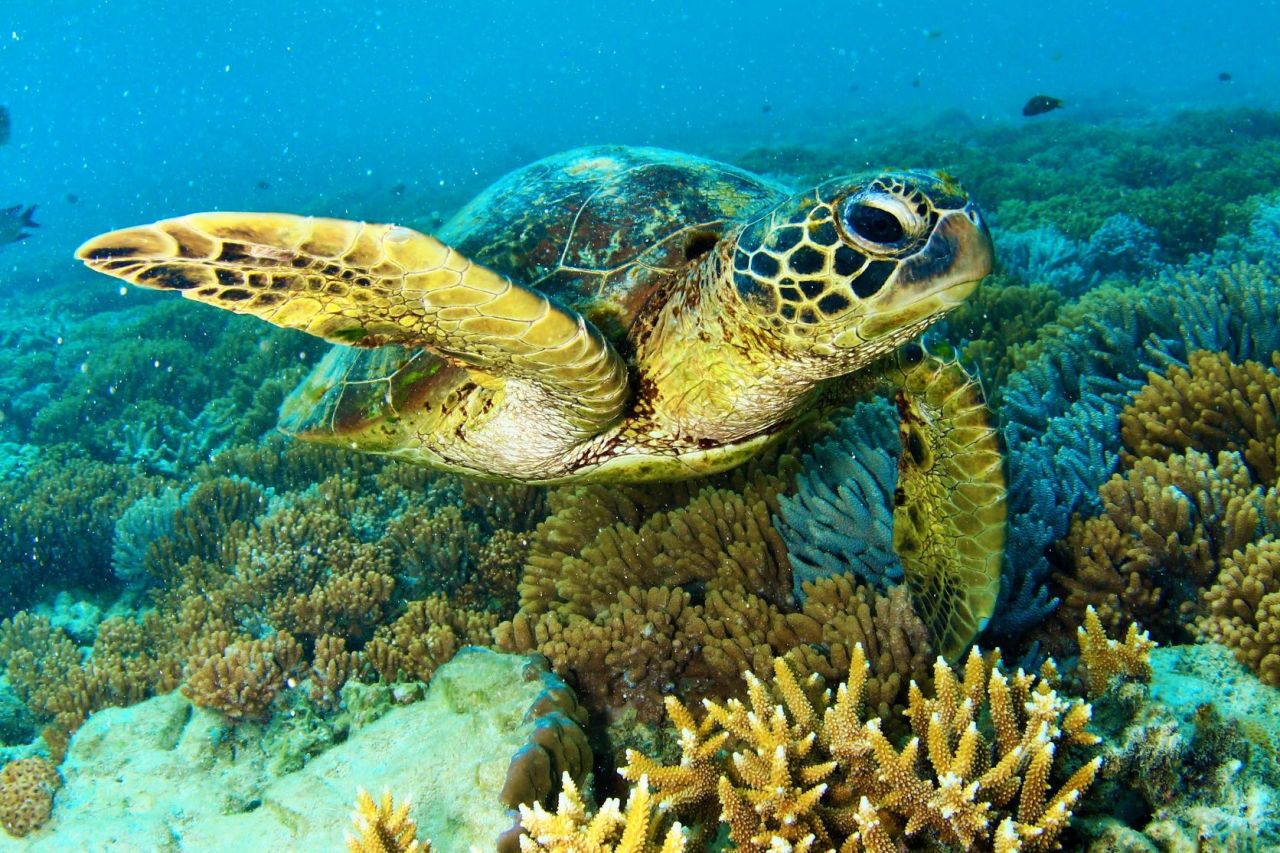People of the Reef ·
Johnny Gaskell: ‘Some spectacular reefs are holding strong, others are struggling’
Our Whitsundays Project Manager says the Great Barrier Reef's rich diversity is what makes it so special - and so fragile.

One glance at his Instagram posts and you would be forgiven for thinking Johnny Gaskell is an accomplished underwater photographer – and he is. But his passion for the ocean and his scientific know-how run much deeper than that.
Johnny is a marine biologist who has so far enjoyed a varied career. He has spent time as a dive master in Ningaloo sharing the wonder of whale sharks, published his first book, Beneath our Bay, about the marine species in Melbourne's Port Phillip, and developed a marine life identification app for Sea Life Australia.
But he’s not stopping there. Johnny is determined to help find new ways to protect the Reef from its biggest threat – the impacts of climate change – so it can continue to thrive for generations to come.
It’s a passion that started early. Johnny says he’s always been fascinated by aquatic animals and as a child would spend hours catching and studying fish and river animals near his home in Bendigo, central Victoria.
“Then I realised there was an ocean and something in me shifted and poor fresh water got left behind,” he says.
We’re glad it did.

The Great Barrier Reef lured Johnny to the Whitsundays in 2014, where he designed and developed Daydream Island’s coral restoration facility and the Living Reef underwater observatory.
Johnny says his greatest professional achievement however is the knowledge he’s gained on reef ecology – the relationships between living organisms found on coral reefs and their interactions with the natural and human environment. His favourite Reef animal is a good example.
“Whip coral shrimp is a symbiotic shrimp that lives exclusively on whip corals. I find it so interesting that it lives on a long skinny piece of coral and rarely leaves – just hangs on and waits for food,” he says.
“I have always been fascinated by animals that have evolved to appear to be a part of their surroundings. The whip coral shrimp is the same colour, has the same patterns and even has spines that are purely there to look like the tentacles of a whip coral. It’s amazing to try and imagine the evolutionary steps that needed to take place for these two totally different invertebrates to co-exist.
“It’s the rich diversity, species abundance and ecosystem complexity over such a large scale that make the Great Barrier Reef so special. The scale is impossible to even comprehend. The more you learn about the reef, the more you realise you don't know.”

Whip coral shrimp. Credit: C. Jones, GBRMPA
Johnny is passionate about the health of the Reef’s coral and loves exploring.
“I have put in as much time as I could to assess coral cover from the southern GBR to the far-northern GBR, to better understand the Reef through exploration,” he says.
“After exploring so many locations over the past few years, I have been witness to some absolutely spectacular reefscapes holding strong, but also watched others change over time and struggle to recover.
“Most of these struggles are linked to impacts caused by us which are generally a result of increased water temperature or changes in water quality. With these changes happening so fast, I am motivated to work closely with other like-minded people to collectively try and do what we can to assist with reef recovery.”

Which is exactly what he’s doing now as the Whitsundays Project Manager for our Reef Islands Initiative.
The initiative is the largest reef habitat rehabilitation project of its kind in the Southern Hemisphere – bringing together Traditional Owners, scientists, local tourism leaders, governments and the community to protect and restore critical island habitats.
The Whitsundays is one of the project’s first sites and Johnny is instrumental in helping the islands, connected reefs and supporting ecosystems by piloting a range of reef restoration approaches.

The Whitsundays is renowned for its incredible coral reefs and marine life.
But it’s not all work and no play. Johnny says he loves snorkelling and spends as much time as he can enjoying the Reef’s rich beauty.
“If I didn’t do this job, I would consider grabbing a yacht, snorkel, fins, a few apples and convince my partner and her dog to come sailing out to the Reef and only come back when we’ve explored all 3,200 reefs,” he says.
“At one reef a day, we should be back in time for Christmas 2030!”




